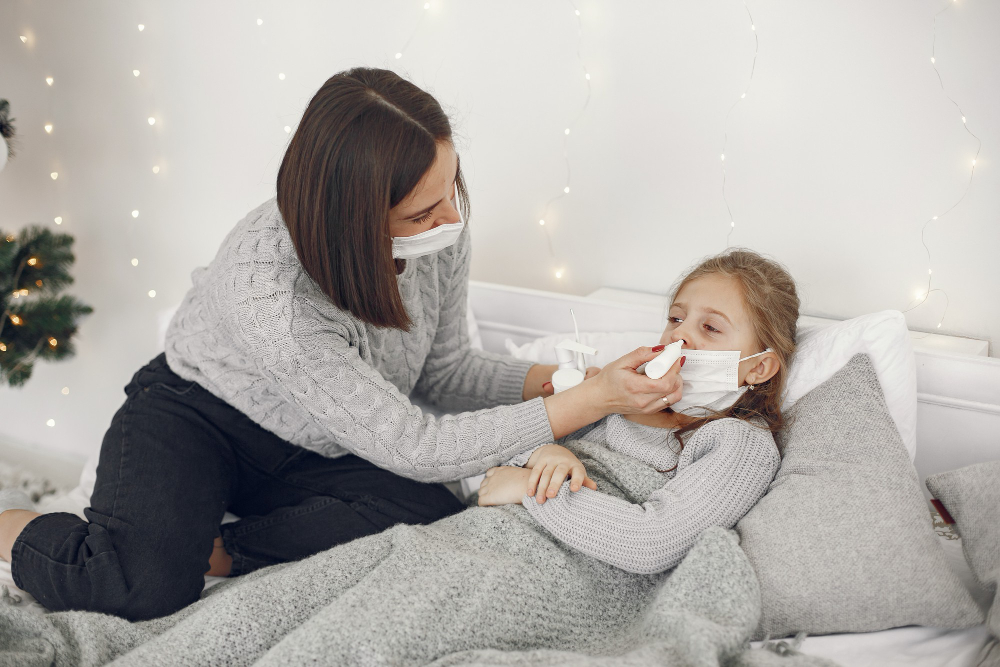Protect your child from whooping cough with our comprehensive guide. Learn about symptoms, prevention, vaccination schedules, and effective care tips for parents. Stay informed and keep your family safe.
Every year, thousands of young children contract whooping cough, a highly contagious respiratory disease that can have severe consequences for infants and toddlers. Known for its signature “whoop” sound during coughing fits, this illness is preventable and manageable with the proper knowledge.
Parents must understand the dangers of whooping cough and take proactive measures to protect their children. This guide will cover everything from symptoms and prevention to treatment and actionable tips for caregivers.
Understanding Whooping Cough
What is Whooping Cough?
Whooping cough, or pertussis, is a bacterial infection caused by Bordetella pertussis. It primarily affects the respiratory system, making breathing difficult for infected individuals.
How Does It Spread?
The bacteria spread through airborne droplets when an infected person coughs, sneezes, or talks. Close contact, such as living in the same household, increases the risk of transmission.
Why Are Children Vulnerable?
Infants and young children, especially those under six months, are at a higher risk due to their underdeveloped immune systems. Without timely vaccination, complications can arise, including pneumonia, seizures, and even brain damage.
Key Statistics
- In the U.S., there are approximately 15,000 reported cases annually.
- Infants account for the majority of hospitalizations related to whooping cough.
Symptoms to Watch For
Stages of Symptoms
Early Symptoms (1-2 weeks):
- Mild coughing
- Runny nose
- Low-grade fever
- Fatigue (resembling a common cold)
Advanced Symptoms:
- Severe coughing fits that last weeks
- The distinctive “whoop” sound when inhaling after a cough
- Vomiting after coughing
- Difficulty breathing
Symptoms in Infants
Infants may not develop the classic “whoop.” Instead, they might exhibit:
- Breathing pauses (apnea)
- Bluish skin due to lack of oxygen
When to Consult a Doctor
Seek immediate medical attention if your child:
- Experiences breathing pauses
- Shows bluish skin
- Has persistent vomiting
The Importance of Vaccination
Why Vaccines Are Essential
Vaccination is the most effective way to prevent whooping cough.
Available Vaccines
- DTaP: For infants and young children
- Tdap: For older children, teens, and adults
Herd Immunity
By vaccinating, you protect not only your child but also other vulnerable individuals, such as infants too young to receive vaccines.
Vaccination Schedule
- DTaP: Administered at 2, 4, 6, 15-18 months, and 4-6 years
- Tdap: Given at 11-12 years, with booster shots in adulthood
Addressing Myths
- Myth: Vaccines cause autism.
- Fact: Numerous studies confirm vaccines are safe and do not cause autism.
- Myth: Natural immunity is better than vaccination.
- Fact: The risks of complications from the disease far outweigh those of vaccination.
What to Do If your Child Has Whooping Cough
Immediate Steps
1. Isolate Your Child: Prevent the spreading of the disease.
2. Consult a Pediatrician: Antibiotics can reduce the severity and duration of symptoms.
3. Provide Small, Frequent Meals: Helps prevent vomiting.
4. Keep Your Child Hydrated: Offer water, milk, or electrolyte solutions.
When Hospitalization Is Necessary
Hospital care might be required for infants under six months or if breathing difficulties persist.
Comfort Tips
- Use a humidifier to ease breathing.
- Keep the room quiet and calm to reduce coughing triggers.
Preventing the Spread of Whooping Cough
Hygiene Habits
- Regular handwashing
- Covering coughs and sneezes
- Cleaning shared surfaces and toys
Vaccination for Family Members
Ensure caregivers and family members are up-to-date on their Tdap vaccines, especially before the arrival of a new baby.
Monitoring Outbreaks
Limit your child’s exposure to crowded places or unvaccinated individuals during local outbreaks.
Conclusion: Whooping Cough
Whooping cough is a serious illness but manageable and preventable with awareness, timely vaccination, and proper care. Take proactive steps today by reviewing your child’s vaccination records and consulting your pediatrician with any concerns. Protect your child and your community by spreading awareness about the dangers of this disease.
Together, we can ensure our kids grow up healthy and safe.
For more lifehacks click here.

